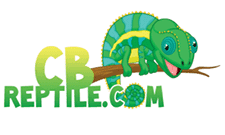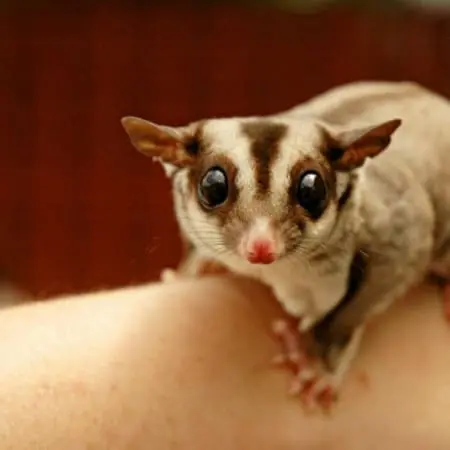Sugar Glider for sale
Looking for a sugar glider for sale online? At CbReptile we have an amazing collection of captive bred sugar gliders for sale! Searching for a stunning sugar glider for sale? At Cb Reptile we have some amazing sugar gliders for sale online!
Sugar Glider for sale Care
Before purchasing your very own sugar glider for sale, be sure to read Cb Reptile’s sugar glider care sheet to ensure proper care and proper sugar glider care for your new pet sugar glider. Below you will find detailed information on sugar glider care provided by our biologist including the following:
- sugar glider
- baby sugar glider
- sugar glider pet
- sugar glider price
- where to buy a sugar glider
- baby sugar glider for sale
- sugar glider shipped
- Sugar glider for sale
- captive bred sugar glider for sale
- buy a captive-bred sugar glider for sale
- captive bred sugar glider
- sugar glider morphs for sale
- baby sugar glider origin
- sugar glider size
- sugar glider habitat
- how to setup sugar glider cage
- sugar glider breeder
- sugar glider breeding
- sugar glider diet
- baby sugar glider food
- sugar glider lifespan
- sugar glider behavior
- how to care for sugar glider
- sugar glider care
- sugar glider care sheet
- sugar glider
- white sugar glider
- sugar glider monkey
Scientific Name: Petaurus Brevicepst
Sugar gliders are so unique that some people do not even know that they exist. Recently, sugar gliders have been domesticated and now make awesome pets! This care sheet contains everything you need to know when taking care of a sugar glider.
They are nocturnal, meaning their active time is at night. They are local to Indonesia and Australia. A common misconception about sugar gliders is that they are rodents, when in fact they are marsupials. Marsupials raise their babies in pouches in their mother’s stomachs.
They get their name from their love of sweets and their skin that runs from their wrists to lower legs, allowing them to glide from tree to tree in nature.
Baby Sugar Glider for sale Origin
Eastern Australiam Papua New Guinea, Indonesia, and Tasmania are where the sugar glider originates from. Sugar gliders live in tree hollows and can be found gliding from trees in rainforests.
Baby Sugar-Glider Habitat
Sugar glider cages should be as large as possible for the space available. The taller the cage, the better, because sugar gliders love to climb. The cage should be at a minimum, 20′′ x 20′′ x 30′.′ Wire mesh should be used on the interior of the cage and close enough so that your pet can not escape. Sugar gliders enjoy quiet, so this should play a role in deciding where to keep your pet sugar gliders cage. The cage should also be kept away from direct sunlight. The temperature should be somewhere in between 59 to 86 degrees F.
What to Put in Your Baby Sugar Glider’s Habitat
Sugar gliders enjoy eating from up high so feeding bowls that attach to the side of the cage are the best option. They also require a nesting place to sleep throughout the day. A wood birdhouse, cloth pouch, or plastic hamster wheel are all good options. A bedding of paper towels, wood shavings, or shredded paper should be laid upon the bottom of the tank to collect urine and droppings. You should make sure that whatever you use to line the bottom of the cage is nontoxic incase it is ingested.
Sugar gliders enjoy toys such as chicken toys, bells, ladders, tunnels, and balls. Branches can also be placed in the cage so they can climb.
Sugar Gliders Diet
3/4s of a sugar gliders diet should incorporate foods from the ground. The remaining 1/4 should contain protein. They favor sweet leafy foods. Here is a list of a few foods that must be incorporated into a sugar glider’s diet:
Fruits and Vegetables: avocados, apricots, apples, sweet corn, bananas, grapes, dates, berries, melon, grapefruit, carrots, cherries, raisins, honeydew, mangos, plums, pineapples, yams, peaches (only can be served pitless), papaya, oranges, and pears
Protein for Your Baby Sugar Glider
Proteins: meats, such as small slices of cooked turkey, chicken, etc, hard-boiled eggs, and yogurt
Special treats: Live bugs such as worms, mealworms, and crickets (should not be gotten from outside, as they may contain pesticides) and unsalted almonds
Most sugar gliders are fussy eaters, meaning they may not eat enough of the supplements they require. Because of this, enhancements, such as a multivitamin for reptiles or calcium supplements should be added to their diet.
Water for Your Sugar Glider
Clean water should always be available for your sugar gliders, although most of their water is supplied from their dinner.
Feeding times depend on your preference. Some sugar glider owners feed them once a day at night, while others feed them twice a day in the morning and night. If they appear hungry in the morning, try feeding them a small piece of food first thing in the morning and then afterwards more at night.
!Sugar substitutes or chocolate must never be given to your sugar glider!
Sugar Glider Behavior
Sugar gliders are very friendly and thoroughly enjoy company. They create strong bonds with their owners. Even if they are met with adequate bonding time, they enjoy being housed with another glider. Sugar gliders have their very own language to communicate with one another and live in large groups in the wild. When kept in a cage all alone, mental, behavioral, or medical problems can happen. Buying multiple gliders and keeping them in the same cage is best. The grooming, bonding, and vocalizations that other gliders provide for one another can not be met by a human owner.
Sugar Gliders Breeding
The group of sugar gliders should be kept together during pregnancy and birth. After birth, some mothers may be disinterested in her babies. If this happens, you must feed the baby (or babies) yourself until they are stable enough to feed themselves. When they reach about 9 months old, females may begin to reproduce. Males mature later and are ready to mate at around 14 months of age. The babies are called “joeys” and often two are born at one time.
The first period is called gestation and it lasts about 16 days. Afterwards comes the in-pouch period which lasts about 72 days. Finally, the weaning period lasts about 115 days.
At the end of the in-pouch stage, babies latch onto their mother’s nipple to begin weaning. The baby stays there for around three months. At the end of these three months, the out-of-pouch stage occurs which means they are ready to be weaned onto a solid diet.
How Often do Sugar Gliders Mate?
With proper protein intake, sugar gliders should mate year round and have 4-6 babies a year.
After the birth, the male should be removed from the mother’s space. The babies reach 3/4 independence when they are out of the pouch, eyes open, covered with fur, and been eating solid food for about a month. This marks the time when they are ready to be handled, but you must be super careful. They should never be removed from the pouch until they reach 3/4 independence because once detached, they can not reattach themselves to the nipple.
How do I feel the New Borns?
New borns should eat semi-solid foods such as low-fat fruit yogurts and baby foods until they are about three months old. After the 3 month mark, they should gradually transition to solid foods.
When Should I Separate them from the parents?
Babies should be separated from their parents at about 2.5 to 3 months old. Both the parents and babies are affected by this change in colony size. This separation may cause them to be anxious for a few days afterward. Female babies are usually hostile toward them after they reach the age of three months, whereas male babies are frequently disregarded.
A Sugar Glider Lifespan
Sugar gliders are longterm pets if properly taken care of. In captivity, they live from 10-15 years old.
Sugar Glider Size
Sugar gliders are around 5-6 inches in length. Their tails, which allow them to “steer” while gliding, add another six inches. They weigh anywhere from 4-5 ounces.
Sugar Glider For Sale
CbReptilecom has a real Marine Biologist on-site! CbReptile ships via UPS or FedEx year-round, in all weather using heated and insulated shipping containers! Not only do we offer the widest variety of healthy tortoises for sale, but we also offer the healthiest sugar gliders for sale! Shop with confidence that any captive bred sugar glider for sale comes with our Live Arrival Guarantee!



